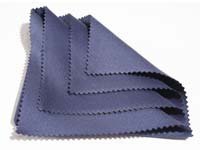M
Machine Glazed (MG) A high-gloss paper finish produced by allowing the wet paper web to dry against a highly-polished metal cylinder, also called a yankee dryer. Paper that has been machine-glazed is occasionally called MG paper. |
| Magenta Magenta is a primary color in the subtractive color model, along with cyan and yellow. Magenta is one of the three primary colors used in color printing and reproduction processes, such as CMYK printing, where it serves as one of the ink colors used to create a wide range of colors and hues. Magenta is a purplish-red color with a dominant hue that lies between red and blue on the color wheel. Magenta is commonly used in color printing to reproduce a variety of colors, including reds, purples, pinks, and blues, by mixing different combinations of cyan, magenta, yellow, and black inks or toners. |
| Makeready In printing, the process of preparing a form for printing by overlays or underlays to equalize the impression. |
Manuscript (MS) Any document written by hand or typewritten, as opposed to being mechanically printed or reproduced in some indirect or automated way. More recently, it is understood to be an author's written, typed, or word-processed copy of a work, as distinguished from the print of the same.
Before the arrival of printing, all documents and books were manuscripts, regardless of their content. |
| Margin The area between the main content of a page and the page edges, which helps to define where a line of text begins and ends. |
| Master print An original copy of a cinema film that can be used to produce other copies. |
| Mechanical Camera-ready assembly of type, graphic and other copy complete with instructions to the printer. A hard mechanical consists of paper and/or acetate, is made using paste-up techniques, and may also be called an artboard, board or paste-up. A soft mechanical, also called an electronic mechanical, exists as a file of type and other images assembled using a computer. |
| Mechanical Bind Binding which uses a comb, coil, ring binder, post or any other technique not requiring gluing, sewing or stitching. |
| Mechanical Tint Lines or patterns formed with dots creating artwork for reproduction. |
| Metallic Ink Ink which contains powdered metal or pigments that simulate metal. |
| Metallic Paper Metallic paper is a type of printing paper with a metallic or pearlescent finish that imparts a subtle shimmer or metallic sheen to printed images. Metallic paper is coated with metallic pigments or reflective layers that enhance color saturation, contrast, and luminosity, giving images a unique, three-dimensional appearance with depth and vibrancy. Metallic paper is commonly used for high-end photography, fine art prints, luxury packaging, greeting cards, and marketing materials to create eye-catching, premium-quality reproductions. Metallic paper is available in various weights, surface textures, and finishes to suit different printing techniques and applications. |
| Microfiber A synthetic fiber that is thinner than the threads usually used for woven fabrics. The result is an extremely soft, absorbent cloth suitable for cleaning scratch-sensitive surfaces. Unless otherwise noted, microfiber cloths are the best choice for cleaning picture frame glass or plexiglass. |
 |
| Midtone An area of medium brightness, neither a very dark shadow not a very bright highlight. A medium gray tone in a print. |
| Mimeograph Also called stencil duplicator, it is a low-cost duplicating machine that works by forcing ink through a stencil onto paper. |
| Misting A condition generated on high-speed presses by rapidly moving ink rollers that spray out filaments and threads of ink. Ink misting more commonly occurs when excessively long ink is used. |
| Mottle Mottle refers to an uneven distribution or irregular pattern of color, tone, or texture in a surface or material, resulting in blotchy or speckled appearance. Mottling can occur naturally in organic materials, such as wood, stone, or marble, due to variations in grain, density, or mineral content. In printing and reproduction processes, mottling can occur when ink or pigment is inconsistently applied or absorbed by the substrate, resulting in areas of uneven color or density. Mottling can also occur in digital imaging due to compression artifacts, noise, or interpolation errors. In some cases, mottling may be intentional and used for artistic effect, while in others, it may be undesirable and corrected through adjustments in printing or image processing. |
| Movable type The system and technology of printing and typography that uses movable components to reproduce the elements of a document (usually individual letters or punctuation) usually on the medium of paper. |
| Mull The gauze used in bookbinding to adhere a text block to a book cover. |
| Mullen Bursting Strength A test performed to measure the bursting strength of paper or paperboard. In a Mullen test (also called a pop test), the paper sample is placed between two ring-like clamps in a device called a Mullen tester, and hydraulic pressure is used to inflate a rubber diaphragm, which expands against the sample stretching it. The measure of the total hydraulic pressure expanding the diaphram at the time the sample ruptures (usually expressed in either pounds per square inch or kilopascals) is its bursting strength. Mullen tests are typically performed on papers and boards designed for use in packaging, bags, and envelopes. It is rarely performed on printing or writing papers. |
| Multicolor Capable of printing in two or more colors simultaneously. |
| Mural Any piece of artwork painted or applied directly on a wall, ceiling or other permanent surface. A distinguishing characteristic of mural painting is that the architectural elements of the given space are harmoniously incorporated into the picture. |

